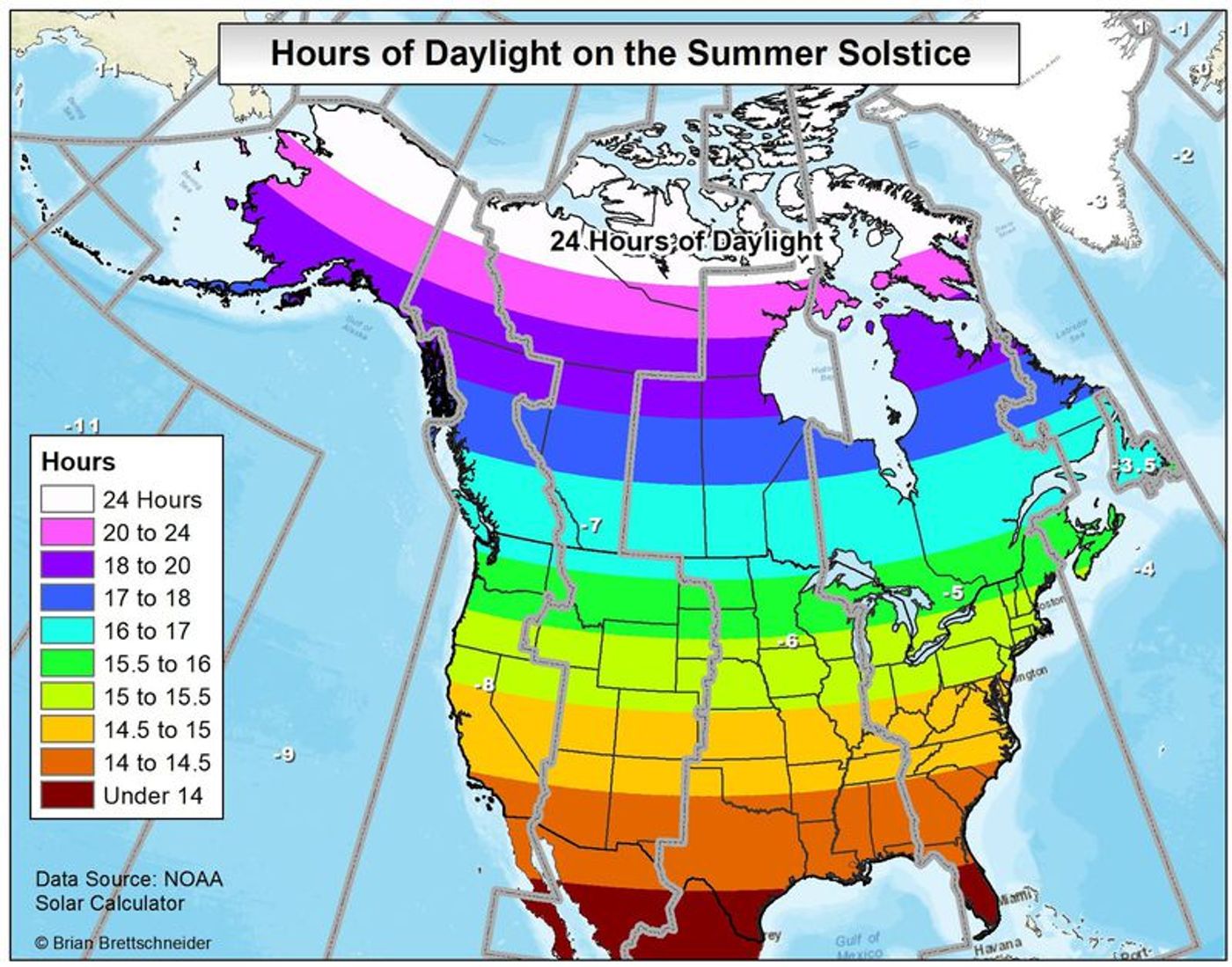Celebrating the longest day of the year
Today at 12:24 am (Eastern Standard Time) those of us in the Northern Hemisphere experienced the summer solstice, otherwise known as the longest day of the year. The time is so specific because technically the summer solstice occurs when the sun is directly overhead the Tropic of Cancer, or 23.5° north latitude. This year, though, because it fell almost exactly amidst June 20th and 21st, you could have chosen to celebrate the solstice on your day of preference. The term 'solstice' comes from the Latin word 'solstitium', which means 'sun standing still'. According to astrologers, this is because the sun seems to 'stand still' at the point on the horizon where it rises and sets.
Why do we even have solstices at all, you ask? Well, our planet orbits around the sun on an axis tilted at 23.5 degrees with respect to the ecliptic, which gives us seasons and prevents temperature extremes anywhere on the planet (although Antarctica and the Middle East may beg to differ). That means that between March and September, Earth’s Northern Hemisphere gets more exposure to direct sunlight over the course of a day. That happens for the Southern Hemisphere on December 21, 22, or 23, when we’re hitting our winter solstice and experience our shortest day of the year.
Now let’s get some facts straight about the summer solstice. First off, in addition to the longest day, the solstice is also the longest twilight of the year, and places around the Northern Hemisphere experience on average about 1 to 1.5 extra hours of light after sunset. Look at the diagram below to get a visual interpretation of this.
But just because the solstice is the longest day of the year for the Northern Hemisphere, not every location has its earliest sunrise or latest sunset on that day. That information is more variable; in fact, Washington D.C., for example, already had its earliest sunrise for the year on June 13!
But today was a special day for the planet and many people have had a long history in celebrating this transition in seasons. Many people flocked to Stonehenge today because the Pagan monument is aligned to the solstices; the rising sun only reaches the middle of the stones one day of the year (today!) when it shines on the central altar. Did you do anything to celebrate the longest day of the year today?
Sources: Vox, The Telegraph, NY Times










